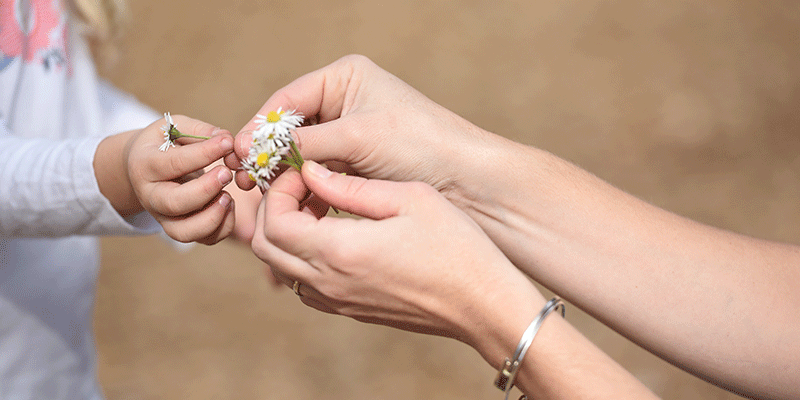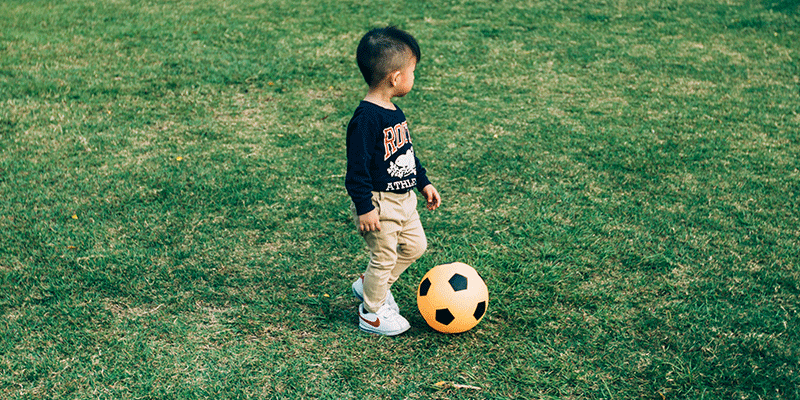
Your Child at Three Years
At age three, your preschooler no longer has to concentrate on the mechanics of standing, running, jumping, or walking. Her movements are now quite agile, whether she’s going forward, backward, or up and down stairs. While walking she stands erect, shoulders pulled back and belly held in by firm abdominal muscles. She uses a regular heel-toe motion, taking steps of the same length, width, and speed. She also can ride a tricycle with great ease.
However, not everything comes easily yet. Your child still may need to make a conscious effort while standing on tiptoes or on one foot, while getting up from a squatting position, or while catching a ball. But if she keeps her arms extended and stiffly forward, she can catch a large ball as well as throw a smaller one overhand quite smoothly.
Your three-year-old still may be as active as she was at two, but she’ll probably be more interested in structured games at this age. Instead of running aimlessly or flitting from one activity to another, she’ll probably ride her tricycle or play in the sandbox for long periods at a time. She also may enjoy active games such as tag, catch, or playing ball with other children.
Your preschooler may seem to be in constant motion much of the time. This is because she uses her body to convey thoughts and emotions that she still can’t describe through language. Moving her body also helps her better understand many words and concepts that are new to her.
For example, if you start talking about an airplane, she may spread her wings and “fly” around the room. While at times this level of activity may be annoying and distracting for you, it’s a necessary part of her learning process and her fun.
Because your child’s self-control, judgment, and coordination are still developing, adult supervision remains essential to prevent injuries. However, it’s a mistake to fuss too much over her. A few bumps and bruises are inevitable and even necessary to help her discover her limits in physical activity.
As a general rule, usually you can leave her alone when she’s playing by herself in her room. She’ll play at her own pace, attempting only those tasks that are within her abilities. Your concern and attention should be reserved for situations when she’s around other children, hazardous equipment or machinery, and especially traffic.
Other children may tease or tempt her to do things that are dangerous, while machines, equipment, and traffic defy her ability to predict their actions or speed. And she still cannot anticipate the consequences of actions such as chasing a ball into traffic or sticking her hand into the spokes of her tricycle, so you’ll have to protect her in these situations.
Last Updated 11/2/2009
Source Caring for Your Baby and Young Child: Birth to Age 5 (Copyright © 2009 American Academy of Pediatrics)
The information contained on this Web site should not be used as a substitute for the medical care and advice of your pediatrician. There may be variations in treatment that your pediatrician may recommend based on individual facts and circumstances.






